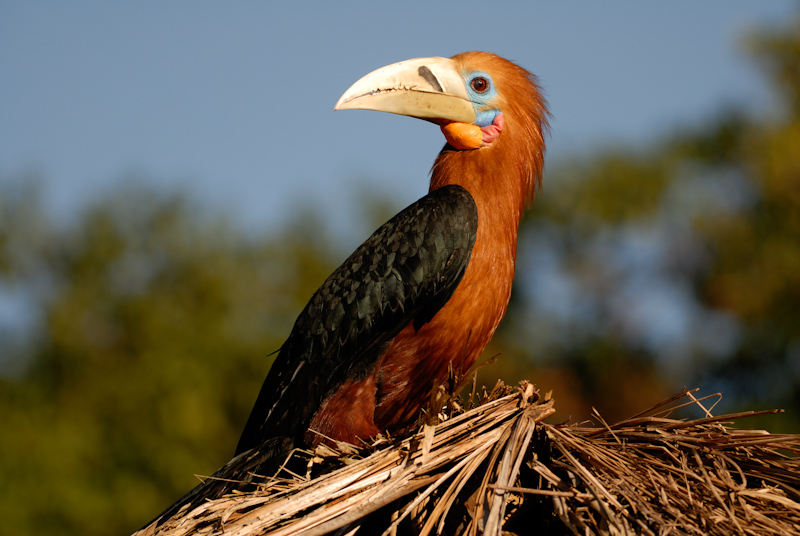Facts About Rufous-necked hornbill
The rufous-necked hornbill is a remarkably large bird predominantly found in northeastern India, particularly in Arunachal Pradesh, as well as across the Indian Subcontinent and Southeast Asia. Regrettably, it is now extinct in Nepal due to hunting and habitat loss, leaving fewer than 10,000 adults remaining in the wild.
Male hornbills are distinguished by their rufous-colored head, neck, and lower body, whereas females are mostly black. Juvenile hornbills lack the distinctive ridges on their upper beak that are evident in adults.
These birds are distributed from northeastern India to western Thailand and northwestern Vietnam. In India, they have been observed in several protected areas, including Namdapha National Park and Manas National Park. They typically inhabit ridged and hilly forests at altitudes ranging from 150 to 2,200 meters but can also be found in dry woodlands.
The nesting season for rufous-necked hornbills spans from March to June. They favor tall trees with broad trunks for nesting. Conservation efforts for these birds are quite comprehensive. They are listed in CITES Appendices I & II, and organizations such as the Wildlife Trust of India and the Arunachal Pradesh Forest Department are actively working to protect them. Initiatives like the Hornbill Nest Adoption Programme aim to safeguard these magnificent birds. Due to increased understanding of their range and population, there is even a movement to change their IUCN status from "Vulnerable" to "Near Threatened."

 Laos
Laos